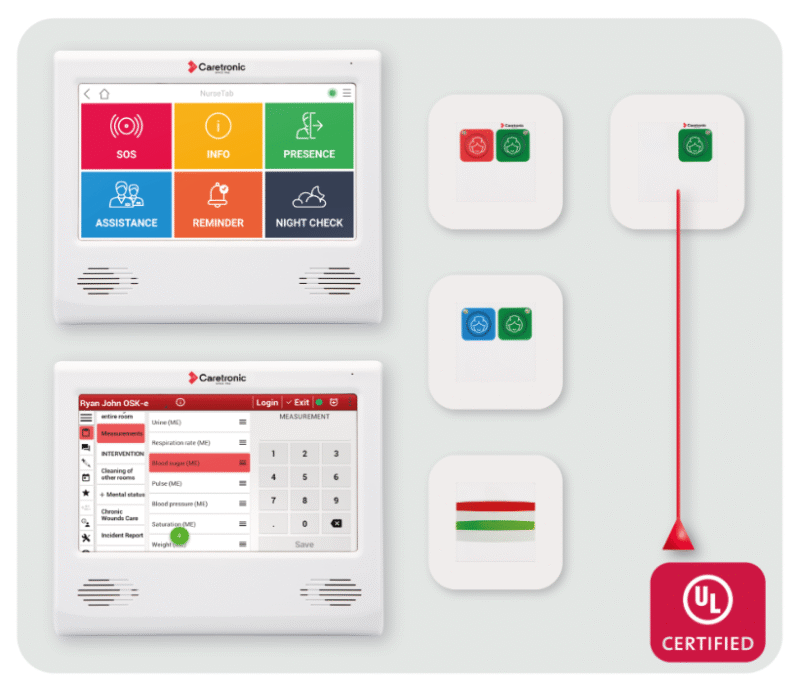Improving patient safety starts with the environment. The physical setting plays a major role in maintaining safety. This includes clutter-free rooms, dry and clean floors, secured cables, clear signage, and user-friendly medical devices. Facilities and equipment must undergo regular inspections to ensure compliance with strict safety standards. In medical environments, prioritising both infection control and effective communication is essential.
Effective communication is especially critical in high-stress settings. It supports medication safety, accurate patient identification, and the prevention of medical errors. Even small missteps can have serious consequences and lead to legal issues. Wireless nurse call light systems enhance communication between caregivers and patients while promoting patient engagement. By reducing paperwork, staff can be more available to answer questions and offer reassurance without feeling rushed. Nurse calling systems also streamline administration and health information management, enabling personnel to devote more time to direct patient care.

Features that define great nurse calling systems
Wireless nurse call light systems connect departments, ensuring that care flows without delay. Several key features define a high-quality solution, and one of the most important is instant, reliable communication. Speed is at the core of any effective calling system—when a patient presses the button, the response must be immediate. Given the dynamic nature of medical environments, both the software and hardware must perform consistently and without failure.
Clear audible and visual alerts are another essential feature, directly improving patient safety. They help prevent alarm fatigue among staff and ensure alerts are recognised even in busy or noisy conditions. An intuitive user interface is also crucial, especially for individuals with limited technological experience. This technology should empower all patients, including those with limited mobility or cognitive impairments, to request help confidently and without hesitation.
Other important features include customization and scalability. Every healthcare facility operates differently, and a great system adapts to those specific needs. A well-designed solution offers flexibility and the ability to grow alongside the institution.
The hidden impact of nurse calling systems on hospital efficiency
Wireless nurse call light systems may seem simple, but beneath their simplicity lies a complex set of components that influence staff management, workflow, safety, and even financial performance.
Advanced technology significantly impacts time and data management. Every minute staff spend walking to and from rooms reduces clinical capacity. Unnecessary movement and interruptions increase employee stress levels. Filtering information before it reaches staff allows them to triage and respond more accurately. This filtering also reduces environmental noise and helps maintain focus, enabling caretakers to distinguish between different levels of urgency without auditory overload.
An often overlooked but essential benefit for improving patient safety is the system’s ability to map operational realities. As devices gather data, they reveal patterns invisible to manual observation, such as bottlenecks, performance fluctuations, and peak demand times. To ensure employee satisfaction and prevent burnout, these systems support better task delegation and clear accountability.

Improving workflow with NurseCare IP-based technology
Nurse calling systems are more than just IP call solutions. Compatible with any medical institution, they optimize management and guarantee safety, thereby improving patient safety. These systems include a NurseTab with an interactive touchscreen display, buttons, an alarm management platform, smart sensors, a smartphone mobile application, an interactive corridor display, and a comprehensive management system.
The digital management platform is a software solution that oversees applications, admissions, services, individual care plans, discharge, billing, general modules, and reports. At Caretronic, we have engineered cutting-edge technology that significantly reduces staff workload and enables patients to signal for assistance effortlessly. The system empowers personnel with greater flexibility and mobility, ensuring faster response times while improving patient safety.
Wireless nurse call light systems support compassionate patient-centred care
Nurse calling systems are more than just buttons, sensors, and alerts. Evolving from basic bells, they have become a vital bridge between human empathy and clinical efficiency. They enable personnel to respond both professionally and compassionately. Healthcare settings often cause patients discomfort, anxiety, or vulnerability, making their ability to communicate dependent on timely responsiveness.
This responsiveness builds trust, supports calm communication, and ensures attentive care. It reduces confusion and strengthens the flow of information. Implementing calling solutions enhances communication (especially in long-term care facilities) amplifying reassurance and emphasizing that care is both physical and emotional. It guarantees that compassion is demonstrated through inclusivity, accessibility, and respect.

Wireless nurse call light systems ensure data protection
Improving patient safety involves much more than just implementing high-quality nurse calls. Medical institutions require technology that supports efficient operations, but they must also safeguard the data generated with utmost diligence. Facilities need to establish strict principles including purpose limitation, confidentiality, lawfulness, accuracy, storage limitation, and data integrity. Modern nurse call equipment employs robust encryption protocols to protect data both in transit and at rest, ensuring security whether information is transmitted over wireless networks or stored within hospital databases.
Collected data is analyzed to provide opportunities for continuous improvement. However, protecting data also means carefully controlling its volume and lifespan. Retention policies define how long information remains in the system, with facilities setting timeframes based on clinical, operational, and legal requirements. After these periods, data is securely deleted or anonymized to maintain privacy and compliance.
In summary, implementing the right technology in healthcare settings not only elevates operational efficiency but also fosters a safer, more responsive environment for everyone involved. Thoughtful design and robust data management further enhance the overall quality of service, promoting trust and confidence among both staff and those they serve. As healthcare continues to evolve, embracing these innovations will be essential for creating compassionate, effective, and future-ready care environments.

